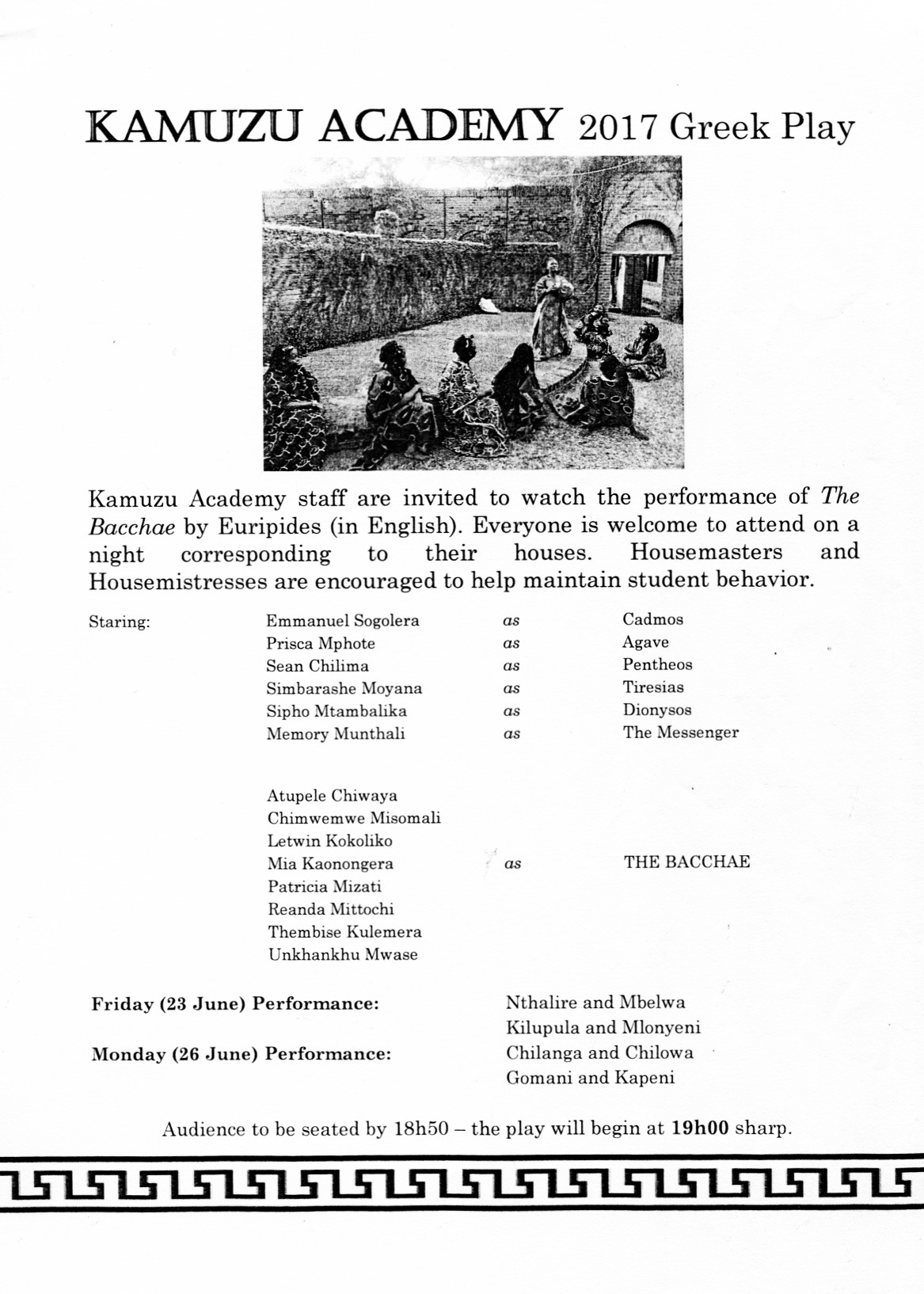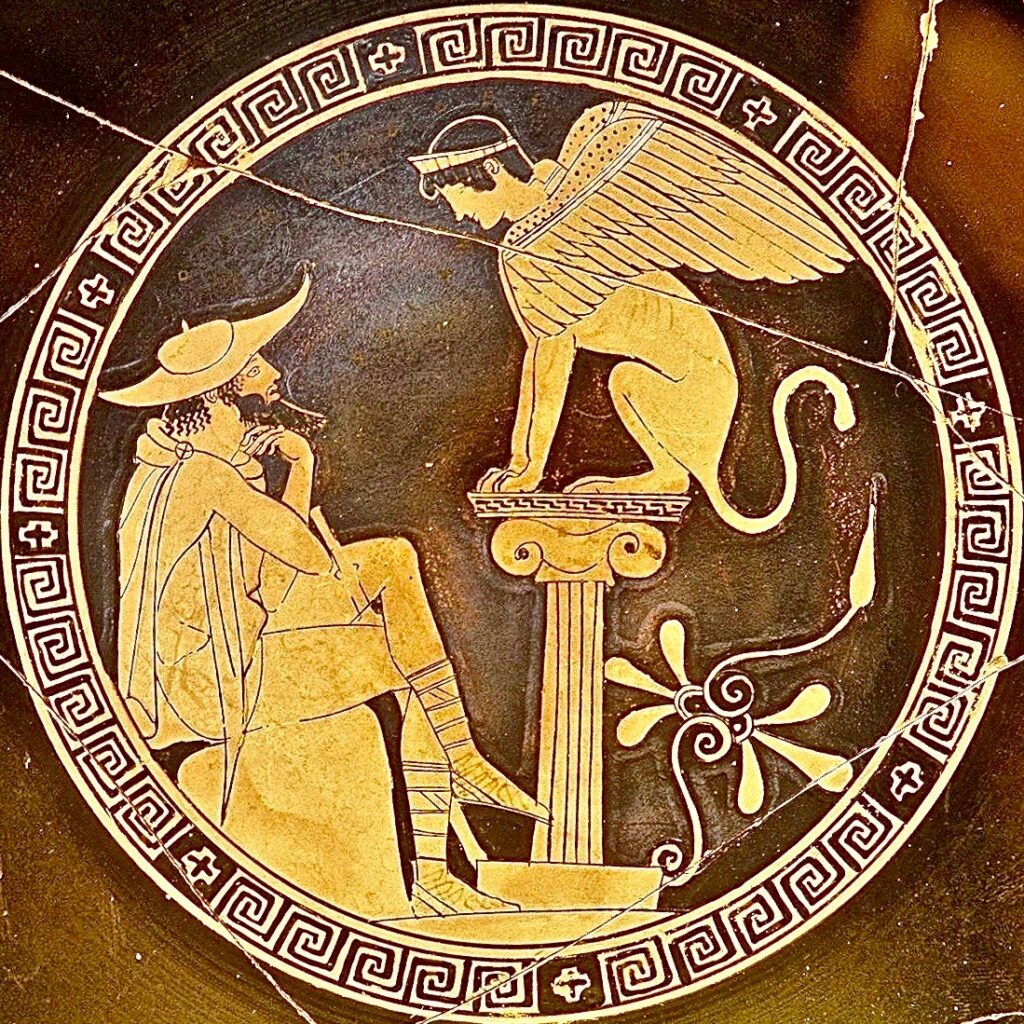Click here to download a copy of the poster (.pdf).

The Director writes...
The wander-god, Dionysos, comes to Thebes to enact revenge on his maternal relatives for their denial of his divinity. He appears on stage under the guise of a humble traveller declaring his intention to bring the Bacchic rites to the city and disrupt King Pentheus' rule. The blind prophet, Tiresias, encourages the royal family to take part in these new rituals, but they are chastised by Pentheus who orders the arrest of the traveller. Brought to face Pentheus, Dionysos craftily persuades him to infiltrate the ritual dressed as a woman. The plan for revenge comes together when Pentheus, mistaken for a lion by the revelling women, is torn limb from limb. His own mother, Agave, comes back to Thebes bearing the head of her son as a trophy. However, the enchantment of the god fades and the full nature of her deed is revealed before the city.
It became very clear in this, the first Greek play at Kamuzu Academy in many years, that the chorus was going to be a crucial element through which the audience could engage with and understand the drama unfolding on stage. Our group of maenads, nine Form 4 girls, did an excellent job at bringing life to Thebes and guiding the audience through Dionysos' deception. They brandished thyrsoi (staffs carries by maenads) which were represented by zibonga (Ngoni ceremonial staves and weapons) and their chants of "O Iacchos, Iacchos" rang out in the Academy’s own open-air Greek theatre.
The choices for design and costume were heavily influenced by Malawian culture. The chorus was dressed in chitones (traditional Greek dresses) made from chitenje (colourful Malawian fabric). The brightness and flowing dresses of the chorus emphasised their role as social provocateurs while the royal family wore traditional animal skins kindly lent to us by St. Mary's Church, Chiphaso Parish. A beautifully carved, wooden head of Pentheus was also commissioned (as a head of Mbona, the self-sacrificial rain priest, whose cult is in Nsanje District) from Mr. Thomas Mpira, a member of the artisan community of carvers at Kungoni Centre of Culture and Art, Mua Mission. It was a magnificent piece of art that accentuated Agave's psychological breakdown. The mask of a bull worn by Dionysos in his final epiphany was created by Mr. Davis Chikoti of Kayeya Village: it draws on the tradition of masked dances that the Chewa people of Malawi call Gule Wamkulu (the Great Dance) and suggests Chimbano, the bull-crocodile figure who rebukes unchaste women and girls.
